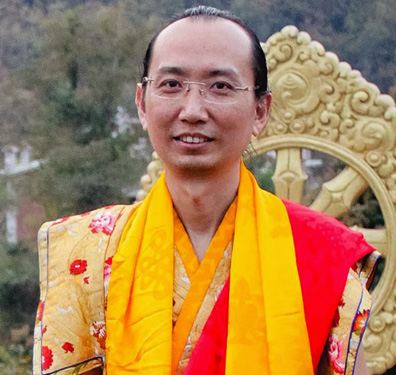A gateway to Indian philosophy and its explication in Tibet.
Among the many works produced in the rich philosophical tradition of India’s classical age, few have had more impact than Dharmakīrti’s Commentary on Valid Cognition (Pramāṇavārttika). Composed in India in the seventh century, it became the cornerstone for the study of logic and epistemology in the Tibetan Buddhist tradition.
This work translated here is by one of the premier scholars of the Sakya school, Gorampa Sönam Sengé (1429–89). It illuminates the first two chapters of Dharmakīrti’s work, those on using inference to enlighten oneself (svārthānumāna) and on establishing valid cognition (pramāṇasiddhi) both to determine the authority of the Buddha as a valid teacher and to eliminate the cognitive obstacles to awakening. The root text is composed in compact verses, and these are translated here along with Gorampa’s word-by-word commentary that reveals their often veiled meanings. These chapters explore key issues in the philosophy of language and the nature of conventional designation, the way to employ sound reasoning, the proof of past and future lives, and the way to eliminate the view of self. In the skilled hands of translator Gavin Kilty, these insights are made accessible.
Light of Samantabhadra is the first volume in a new academic series from Wisdom and the Khenpo Appey Foundation. The Khenpo Appey Collection of Sakya Classics aspires to fulfill Khenchen Appey Rinpoche’s vision of making important and authoritative Sakya works accessible to English-speaking audiences. This series, conceived by the Khenpo Appey Foundation and published by Wisdom Publications, will contain translations of texts central to Tibetan Buddhist study composed by influential Sakya masters to provide a holistic and comprehensive presentation of Buddhist thought and philosophy.
BOOK INFORMATION
- Hardcover
- 536 pages, 6 x 9 inches
- ISBN 9781614297512
ABOUT THE AUTHOR

Gavin Kilty has been a full-time translator for the Institute of Tibetan Classics since 2001. Before that he lived in Dharamsala, India, for fourteen years, where he spent eight years training in the traditional Geluk monastic curriculum through the medium of class and debate at the Institute of Buddhist Dialectics. He also teaches Tibetan language courses in India, Nepal, and elsewhere, and is a translation reviewer for the organization 84000, Translating the Words of the Buddha.
Other books by Gavin Kilty:
The Fourteenth Dalai Lama’s Stages of the Path, Volume 1
Tales from the Tibetan Operas
Understanding the Case Against Shukden
Mirror of Beryl
The Splendor of an Autumn Moon
A Lamp to Illuminate the Five Stages
Ornament of Stainless Light

His Holiness the Forty-Second Sakya Trizin, Ratna Vajra Rinpoche, holds the esteemed position of the forty-second Sakya throne holder within the Sakya school of Tibetan Buddhism. He is renowned for his profound knowledge and the clarity of his teachings, making him one of the most well-regarded lineage holders in the Tibetan Buddhist tradition. He hails from the acclaimed Khön family, known for producing successive generations of exceptional Buddhist masters. From a young age, His Holiness received extensive teachings, empowerments, and transmissions in both sutra and tantra from his father and numerous other esteemed teachers. After completing rigorous philosophical studies at Sakya College in India, he earned the kachupa degree. Embarking on meditation retreats from the age of twelve, including the Hevajra retreat, a key tantric practice within the Sakya school, with great humility, he travels extensively to offer teachings and empowerments to students worldwide upon their request.
Other books by His Holiness the 42nd Sakya Trizin:
The Fundamental Practices
The Bodhisattva Path from Ground to Fruition




